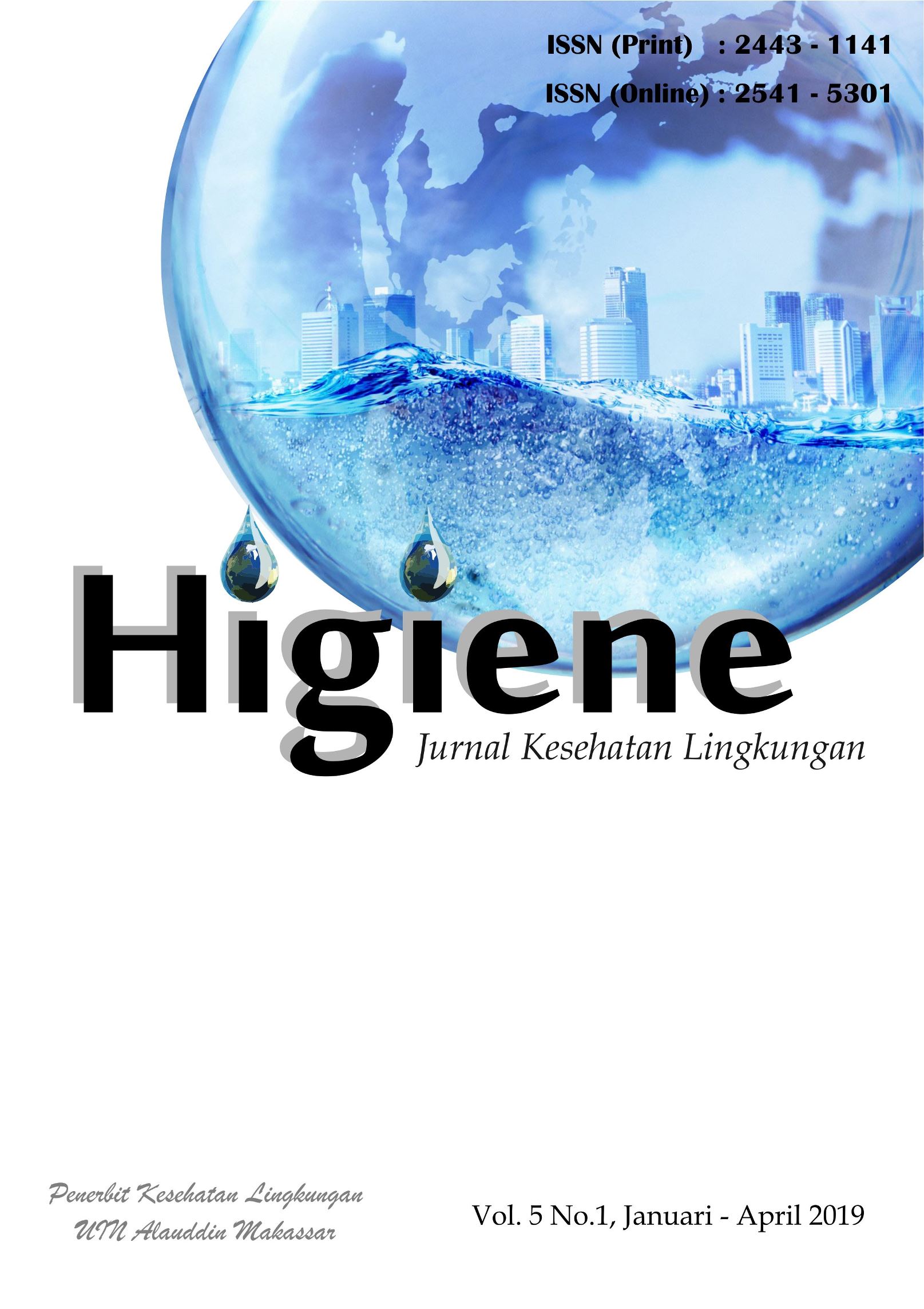Correlation between the Pollution Risk of Wells and the Presence of Escherichia coli Bacteria at Daroy Kameu Village Darul Imarah subdistrict Aceh Besar district in 2017
Abstract
Wells are one of the means of clean water supplier for rural and urban communities. The risk of bacterial pollution in wells is very large since it is influenced by the lack of concern and knowledge of the well owners in carrying out maintenance. This study aims to find out the correlation between the pollutionrisk of wells and the presence of Escherichia coli bacteria at Daroy Kameu Village, Darul ImarahSubdistrict, Aceh Besar District, in 2017.
This study was a descriptive analytic study with a cross sectional design with the samples of 30 wells. The study was conducted in March to April 2017 at Daroy Kameu Village, Darul Imarah Subdistrict, Aceh Besar District. Data analysis was conducted with Chi-square test.
Form the results of data analysis ir can beconcluded that there was a correlation between the level of pollution risk of wells and the presence of E. coli bacteria in well water (p = 0.021), there was a relationship between the distance of dug wells with the presence of E. coli bacteria in well water (p=0.019), there was a correlation between the walls of the well and the presence of E. coli bacteria in well water (p 0.026), there is a relationship between the well lip dig and the presence of E. coli bacteria in dug well water (p=0.011), and there was a correlation between the floor of the well and the presence of E. coli bacteria in well water (p=0.030).
The community is expected to reduce the level of pollution risk by monitoring and improving the non suitable construction of wells so that the well condition remain safe and can meet the requirements. Thus there is no bacterial contamination in well water.
Keywords: Well, Escherichia coli, Risk of Pollution
References
Adekunle, A. S. (2000). Effect Of Industrial Effluent On Quality of Well Water Within Asa Dan Indutrial Estate, Ilorin, Nigeria. Nature and Sciene.
Budiman, & Suyono. (2012). Ilmu Kesehatan Masyarakat Dalam Konteks Kesehatan Lingkungan. Jakarta: EGC.
Hasnawi H. (2012). Pengaruh Konstruksi Sumur Terhadap Kandungan Bakteri Eschercia Coli Pada Air Sumur Gali Di Desa Dopalak Kecamatan Paleleh Kabupaten Buol. Universitas Negeri Gorontalo.
Joko, T. (2010). Unit Air Baku Dalam Sistem Penyediaan Air Minum (1st ed.). Yogyakarta: Graha Ilmu.
Kusnoputranto, H. (1997). Kesehatan Lingkungan. Jakarta: Direktorat Jenderal Pendidikan Tinggi Departemen Pendidikan dan Kebudayaan.
Marsono. (2009). Faktor-Faktor yang Berhubungan dengan Kualitas Bakteriologis Air Sumur Gali di Permukiman Studi di Desa Karanganom, Kecamatan Klaten Utara, Kabupaten Klaten. Jurnal Kesehatan Lingkungan UNDIP.
Notoadmojo, S. (2011). Kesehatan Masyarakat Ilmu dan Seni (Ed.revisi). Jakarta: Rineka Cipta.
Prajawati R. (2008). Hubungan Kontruksi dengan Kualitas Mikrobiologi Air Sumur Gali. Jurnal Ruwa Jurai, 2.
Puskesmas Darul Imarah Aceh Besar. (2016). Laporan Tahunan Puskesmas. Aceh Besar.
Radjak, & Ferbiyanti., N. (2013). Pengaruh Jarak Septic Tank dan Kondisi Fisik Sumur Terhadap Keberadaan Bakteri Eschericia coli. Universitas Negeri Gorontalo.
Slamet, J. S. (2009). Kesehatan Lingkungan. Yogyakarta: Gadjah Mada University Press.
Sopianna, E. (2015). HUBUNGAN JARAK KANDANG TERNAK,PERILAKU MASYARAKAT DAN KONSTRUKSI SUMUR GALI TERHADAP KUALITAS BAKTERIOLOGIS AIR SUMUR GALI PENDUDUK DESA SIALANG BUAH KECAMATAN TELUK MENGKUDU KABUPATEN SERDANG BEDAGAI TAHUN 2015. USU.
Sumandibrata, M., & Daldiyono. (2009). Buku Ajar Ilmu Penyakit Dalam (Edisi 5). Jakarta: Internal Publishing.
Sumantri, A. (2010). Kesehatan Lingkungan dan Perspektif Islam. Jakarta: Prenada Media.
Waluyo, L. (2009). Mikrobiologi Lingkungan. Malang: UMM Press.
WHO World Health Organization. (2001). Laporan Komisi WHO Mengenai Kesehatan dan Lingkungan. Yogyakarta: Gajah Mada University Press.
WHO World Health Organization. (2007). Nitrate and Nitrite in Drinking Water. Geneva, Switzerland: WHO Press, World Health Organization, 20 Avenue Appia.
Copyright (c) 2019 HIGIENE: Jurnal Kesehatan Lingkungan

This work is licensed under a Creative Commons Attribution 4.0 International License.


